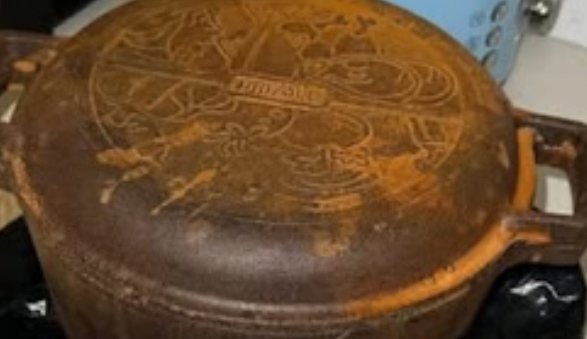1. Acidic Foods (Tomato Sauce, Vinegar-Based Dishes, Citrus)
- Why Avoid? Acidic ingredients like tomatoes, vinegar, lemon juice, or wine can strip away the seasoning on your pan and react with the iron, leaving a metallic taste in your food.
- What to Do Instead? Use stainless steel, enamel-coated, or nonstick pans for dishes with high acidity. If you must use cast iron, limit cooking time and re-season the pan afterward.
2. Delicate Fish or Seafood
- Why Avoid? Thin, flaky fish like tilapia or sole can stick to the pan, even if it’s well-seasoned, leading to a messy cleanup and ruined presentation.
- What to Do Instead? Opt for nonstick pans or grilling methods for delicate seafood. Save your cast iron for heartier fish like salmon or tuna steaks.
3. Eggs (Unless Perfectly Seasoned)
- Why Avoid? Eggs are notorious for sticking to cast iron unless the pan is perfectly seasoned. Even then, they’re tricky to flip and clean up afterward.
- What to Do Instead? Use a nonstick or stainless steel pan for scrambled, fried, or poached eggs. Reserve cast iron for baked egg dishes like frittatas.
4. Sticky or Sugary Desserts (Crispy Cookies, Caramel)
- Why Avoid? Sticky or sugary foods like caramel, candy, or cookies can adhere stubbornly to the pan, making cleanup a nightmare and potentially damaging the seasoning.
- What to Do Instead? Use nonstick bakeware or silicone mats for desserts. Stick to cast iron for sturdier baked goods like cornbread or skillet brownies.
5. Smelly or Strongly Flavored Foods (Fish, Garlic, Onions)
- Why Avoid? Cast iron is porous and can absorb strong odors from foods like fish, garlic, or onions. These odors may linger and transfer to other dishes cooked in the same pan.
- What to Do Instead? Cook smelly foods in stainless steel or glass cookware to avoid flavor transfer.
6. Dairy-Heavy Sauces (Cream-Based or Cheese Sauces)
- Why Avoid? Creamy sauces can curdle or scorch in cast iron due to uneven heat distribution and residual iron particles.
- What to Do Instead? Use enamel-coated or non-reactive pans for creamy sauces and soups.
7. Frozen Foods
- Why Avoid? Placing frozen foods directly into a hot cast iron pan can cause thermal shock, damaging the pan and causing food to stick.
- What to Do Instead? Thaw frozen foods before cooking or use a different type of pan designed for quick temperature changes.
8. Rice or Risotto
- Why Avoid? Cooking rice in cast iron can lead to uneven heating and sticking, making it difficult to achieve the perfect texture.
- What to Do Instead? Use a saucepan or pot with a heavy bottom for rice dishes.
9. Marinades or Long Simmers
- Why Avoid? Prolonged exposure to liquid marinades or simmering can break down the seasoning and leave behind sticky residue.
- What to Do Instead? Use a Dutch oven or stainless steel pot for slow-cooking recipes.
10. Raw Dough (Pizza or Bread Without Enough Fat)
- Why Avoid? Raw dough can stick to cast iron if there isn’t enough fat or oil to prevent sticking.
- What to Do Instead? Make sure to generously grease the pan or use parchment paper when baking bread or pizza in cast iron.
Bonus Tips for Cast Iron Care
- Avoid Soap (Mostly) : While a little soap won’t ruin your pan, harsh detergents can strip the seasoning. Stick to hot water and a stiff brush for cleaning.
- Don’t Soak : Never let your cast iron sit in water, as it can lead to rust. Dry it immediately after washing.
- Re-Season Regularly : After cleaning, rub a thin layer of oil onto the pan and heat it briefly to maintain the seasoning.
Final Thoughts
Your cast iron pan is an incredible tool, but it’s not invincible. By avoiding these foods and techniques, you’ll protect its seasoning, prevent damage, and ensure your meals taste their best. With proper care and smart cooking choices, your cast iron skillet will last a lifetime—and maybe even become a family heirloom!
Your Turn! Have you ever accidentally cooked something in cast iron that didn’t turn out well? Share your story or tips for keeping your pan in great condition below.

